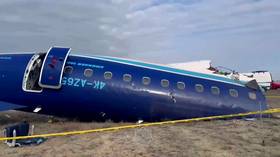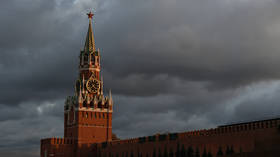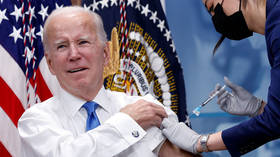Under shadow of US missile defense, Russian-Polish relations growing

Washington and Warsaw have put the final touches on a missile defense system for Poland at the same time a “Russian-friendly” candidate has been elected president.
While Poland was in the grips of a down-to-the-wire presidential race, US Secretary of State Hillary Clinton was in town, meeting with Radoslaw Sidorski, the Polish Foreign Minister to sign a revised missile defense deal between the US and Poland.
The agreement, signed in Krakow on Saturday, recognizes changes in the missile defense system, first conceived by the hawkish Bush White House, and later "tamed" for public consumption with the arrival of President Barack Obama.
Although plans for US missile defense in Eastern Europe may have changed, the tension that it is fomenting in the region has not. Thus, Washington reiterates its assurances that the new technology poses no threat to Moscow. Yet with every such assurance on the part of Washington, Russia is reminded that the system really could – if push ever comes to shove – threaten national security.
"This is a purely defensive system," Clinton said. “It is not directed at Russia. It does not threaten Russia."
Meanwhile, Warsaw says the US missile shield will be able to protect all European members of NATO; it also announced that Russian engineers will have the right to inspect the system.
Washington has continually balked on Russia’s invitation to “jointly build and operate a transparent missile defense system” in the region – in Azerbaijan, for example, at the former Gabala radar facility – which has helped fuel Moscow’s lingering suspicions that America's "good intentions" carry more sinister goals.
Washington trip coincides with elections
Whether coincidence or not, Clinton’s visit to Poland came amidst a closely contested presidential election, which has brought to the forefront a Polish president who analysts say may be more sympathetic to Russia’s concerns than his predecessor.
With 95 per cent of the votes counted, Bronislaw Komorowski of the governing Civic Platform Party became the new Polish president with 52.63 per cent of the vote. His opponent, Jaroslaw Kaczynski received just 47.37 per cent.
Jaroslaw Kaczynski is the candidate of Poland's right-wing main opposition party Law and Justice (PiS), and is also the identical twin of the late President Lech Kaczynski, whose death in a plane crash in Russia on April 10 forced early elections.
Federation Council Speaker Sergey Mironov expressed his hope that Poland's new president will help foster better relations between Russia and Poland.
"I hope the new president of Poland…will solidify the positive changes that have occurred in our relations lately," Mironov told Interfax, while adding that "Poland and Russia have a centuries-old common history."
Alexei Makarkin, First Vice-President of the Political Technology Center, echoed Mironov’s sentiments, adding that the new Polish president is “not pro-Russian, but a realist.”
"Certainly, Komorowski is not pro-Russian, but he is a realist,” Makarkin said. “Relations with Russia are an important strategic factor for Komorowski, the same as for Prime Minister Donald Tusk. In this context, a Komorowski victory…is more beneficial for Russia."
Komorowski, 58, as a historian and former defense minister, will greatly help Prime Minister Donald Tusk to mend international relations, which some say came under strain during the late Lech Kaczynski’s term in office.
Rollercoaster relations between Poland and Russia
Ever since the Bush administration announced that Poland would play host to elements of its controversial missile defense system, Russian relations with Warsaw have resembled a rickety ride at the local amusement park.
Reports first surfaced in the spring of 2006 that Poland and the Czech Republic were to host key elements of the US missile defense system, ostensibly designed to protect the European continent from a rogue missile attack, usually described as Iran. Russia responded vociferously to the plans, arguing that such a system so close to its borders would compromise its national security, not to mention possibly provoke another arms race.
Incidentally, according to opinion polls conducted in Poland at the peak of the “debate” over the issue, 55 per cent of Poles were opposed to their country hosting the missile defense system on their territory. Polls in the Czech Republic, which was anticipated to host the missile defense system’s radar, revealed similar levels of public disaffection with the plan.
With the arrival of President Barack Obama and his pledge to “reset” relations with Russia, it looked as if Washington was prepared to make some concessions in order to maintain healthy relations with Russia.
Following a re-evaluation of the Iranian missile threat, the US reconfigured its missile defense plans to include a “more flexible” sea- and land-based SM-3 anti-missile interceptors in Poland.
As Robert Gates, the US Secretary of Defense summed up the new defense system inside the pages of The New York Times (“A Better Missile Defense for a Safer Europe, Sept. 19, 2009), “In the first phase, to be completed by 2011, we will deploy proven, sea-based SM-3 interceptor missiles – weapons that are growing in capability – in the areas where we see the greatest threat to Europe.
“The second phase, which will become operational around 2015, will involve putting upgraded SM-3s on the ground in Southern and Central Europe. All told, every phase of this plan will include scores of SM-3 missiles, as opposed to the old plan of just 10 ground-based interceptors. This will be a far more effective defense should an enemy fire many missiles simultaneously.”
It is no wonder that, given such a glowing, ambitious review of Obama’s “missile defense lite” that Moscow continues to harbor suspicions over the program, which only promises to expand in all directions – geographically, as well as technologically – in the future.
In addition to the revamped missile defense system, Poland also received a Patriot missile battery, situated at the military base at Morag, some 250 kilometers (150 miles) north of Warsaw and just 60 kilometers (40 miles) from the border with Russia's Kaliningrad territory.
Around 100-150 US troops will service the ground-to-air defensive installation in Poland and train Polish soldiers to operate it.
Warsaw says the Patriot complexes should not concern Poland’s neighbors.
“Patriot missiles are very small tactical defensive systems, operating at very short range,” Radoslaw Sikorski, Poland’s Foreign Minister told RT in a past interview. “And it has nothing to do with global security. There are dozens of these missiles in Germany, Turkey, all over the place. Japan has some too. It’s nothing to worry about for any neighbor of Poland.”
Polish-Russian relations on the rise
Perhaps it is partially explainable by Poland’s fiercely-independent nature that at the same time it nurtures stronger ties with the United States on the military front, it is beginning to look eastwards to Russia on the political front. With the election of Bronislaw Komorowski as the new Polish president, Moscow and Warsaw may be on the verge of truly significant changes.
Of course, much of the recent thaw in Polish-Russian relations proceeded from the air disaster that claimed the life of the President Lech Kaczynski, his wife, and about 100 of his colleagues en route to mark the 70th anniversary of the Katyn Massacre in Russia. That catastrophe forced Poles and Russians to pause and reflect on their relations – both distant and recent – which were beginning to show faint signs of progress before the disaster struck outside of Smolensk.
The image of Polish Prime Minister Donald Tusk exchanging an embrace with Russia’s Vladimir Putin at the crash site showed the human side of politics, so often locked in the past, and proved that countries, like people, can put aside their many differences and disagreements and move ahead – if the will to do so is there.












